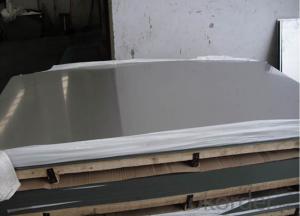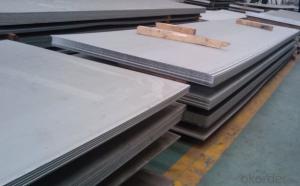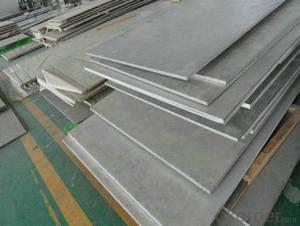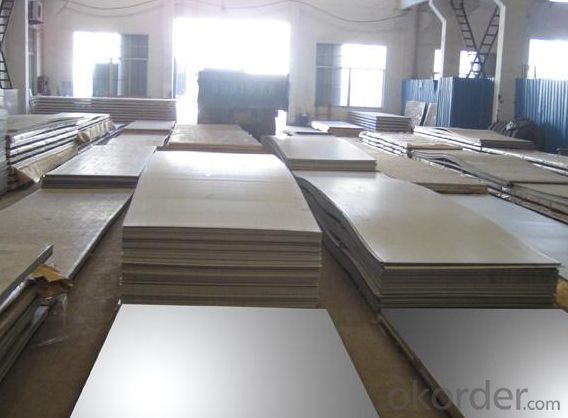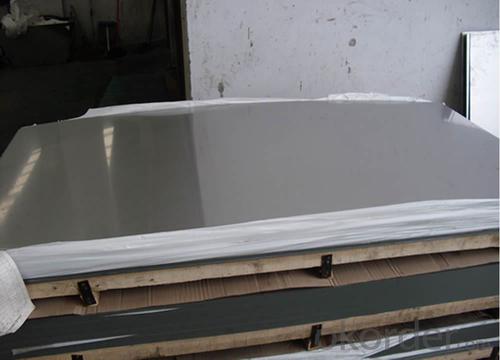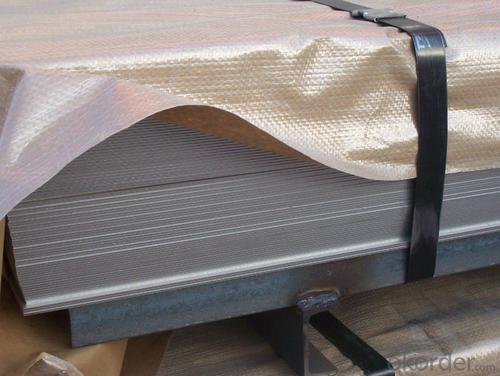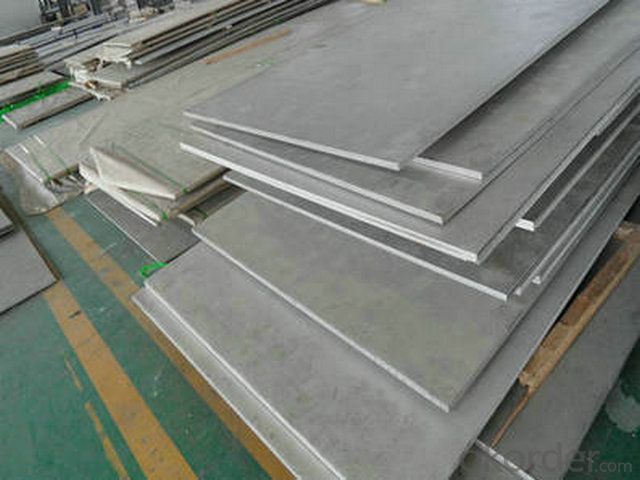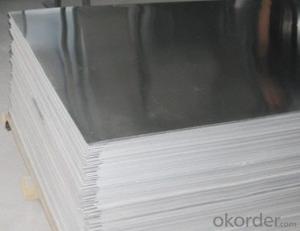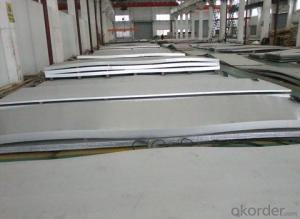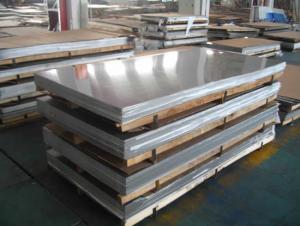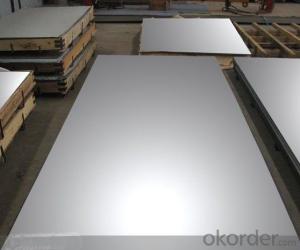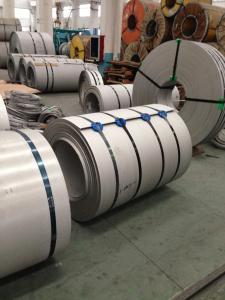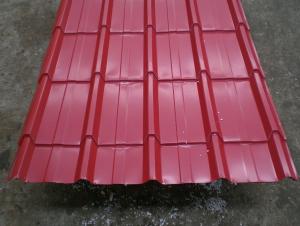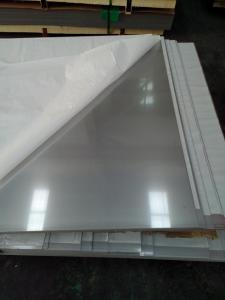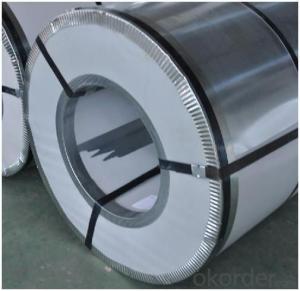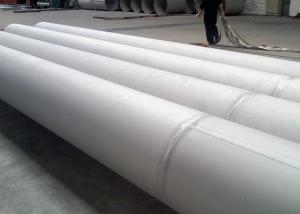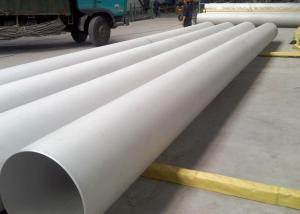Stainless Steel sheet and plate with Innovative Technology
- Loading Port:
- Shanghai
- Payment Terms:
- TT OR LC
- Min Order Qty:
- 10000 m.t.
- Supply Capability:
- 5000000 m.t./month
OKorder Service Pledge
OKorder Financial Service
You Might Also Like
Specifications of stainless steel
304 stainless Steel Plate
stainless steel plate,steel sheet,steel plate
Standard: ASTM,GB,DIN,JIS,ISO,EN,etc.
TISCO stainless Steel Plate 304/NO.1 finished
stainless steel plate,steel sheet,steel plate
Standard: ASTM,GB,DIN,JIS,ISO,EN,etc.
Delivery short and low cost advantage.
Description of stainless steel:
stainless steel plate,hot rolled stainless steel plate,cold rolled stainless steel plate,stainless steel sheet,steel sheet,sheet
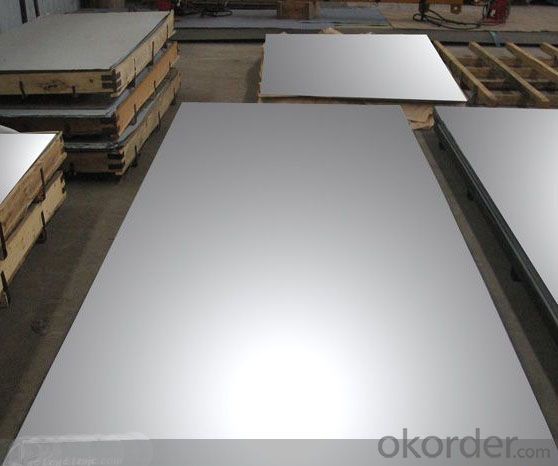
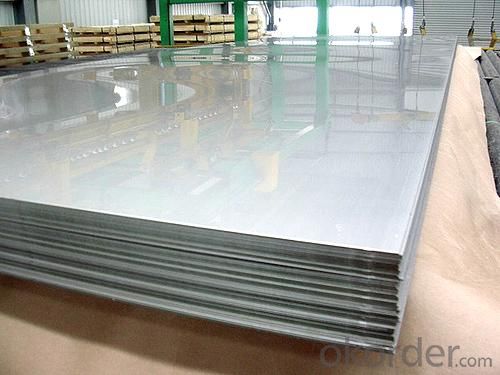
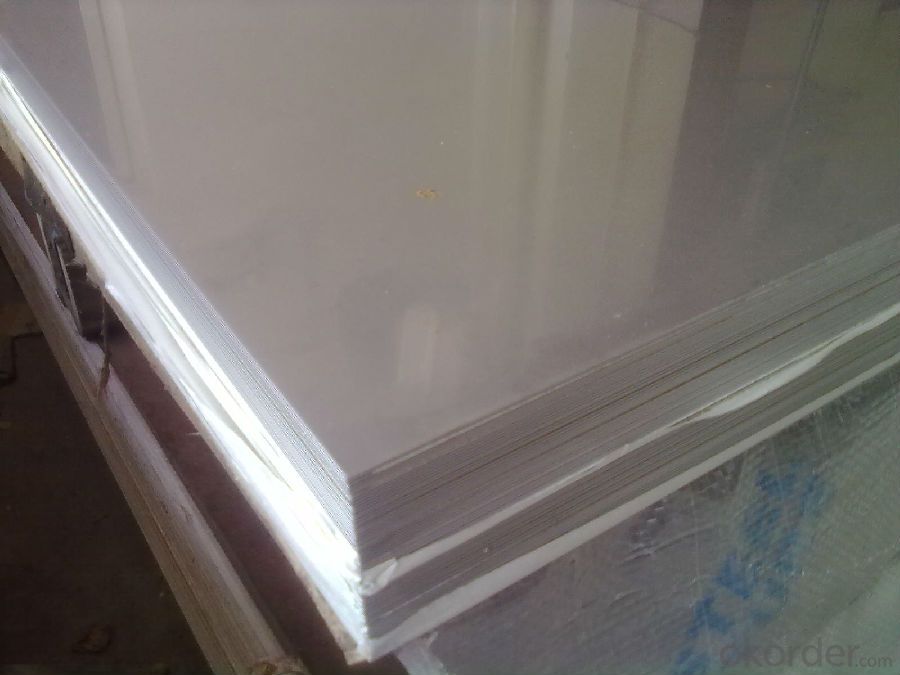
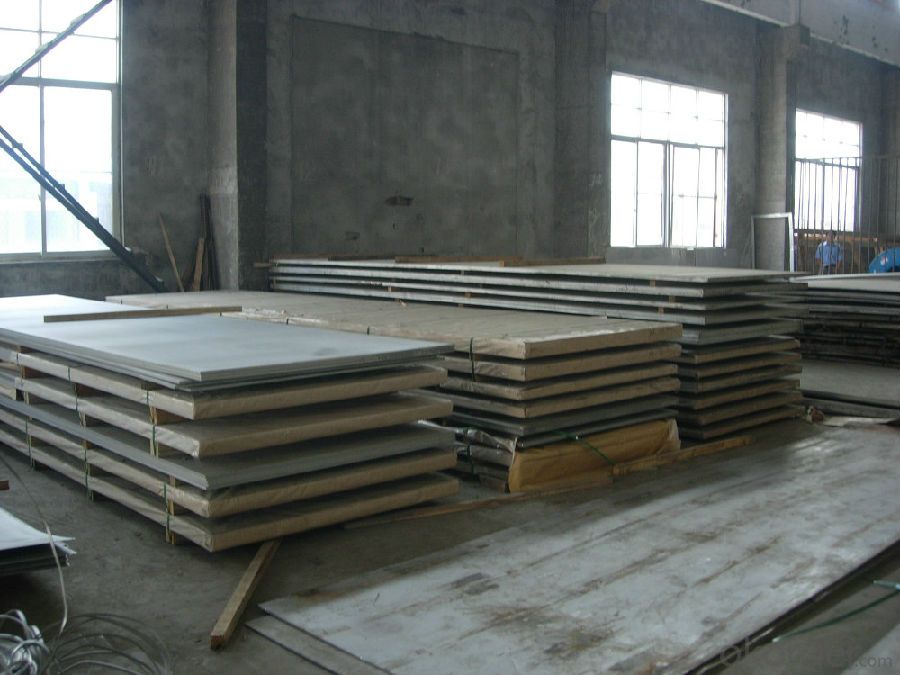
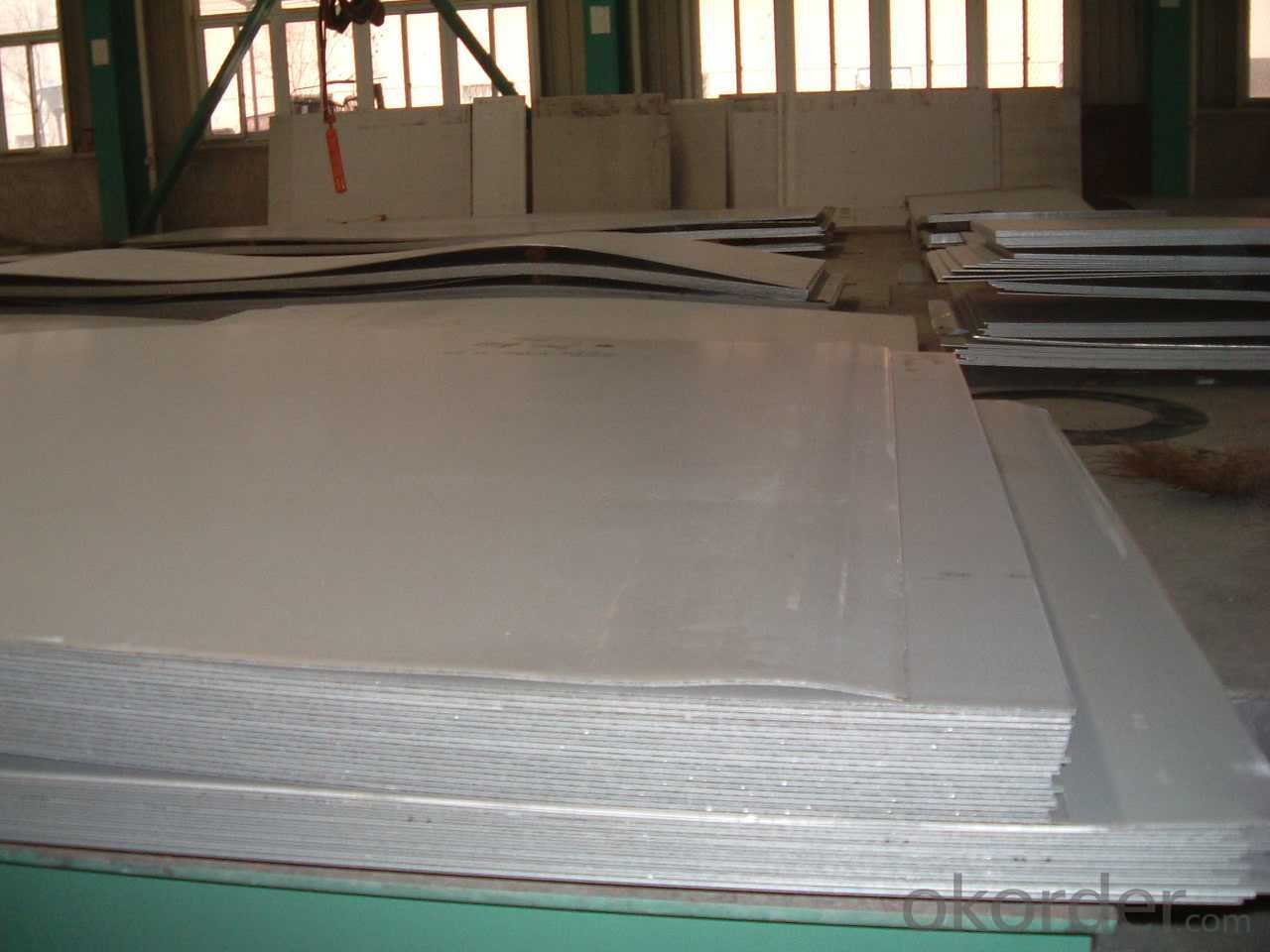
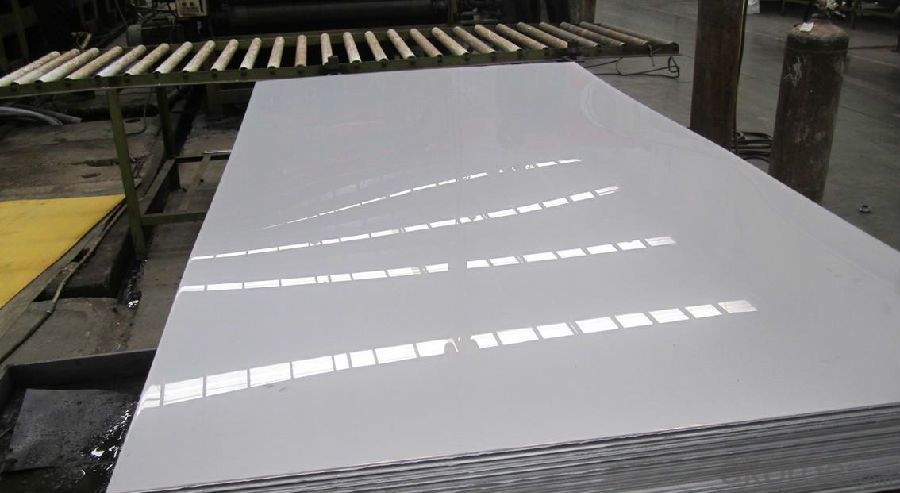
Material of stainless steel:
304,304L,309S,310S,316,316L,316Ti,317L,317L,321,347H,409,409L,410S,420,430,201,202,etc.
Thickness of stainless steel:
From 0.3mm to 100mm
Width of stainless steel:
1000mm,1219mm,1250mm,1500mm,1800mm,2200mm,2500mm or as your requirement
Length of stainless steel:
2000mm,2438mm,2500mm,6000mm,6096mm or as your requirement
Application of stainless steel:
Stainless steel plate applies to construction field, ships building industry, petroleum & chemical industries, war and electricity industries, food processing and medical industry, boiler heat exchanger, machinery and hardware fields. Our company has cooperative relation between the domestic agents. Stainless steel plate can be made accordingto the customers requirements. Fasten delivery. Quality assured.Welcome to order more.
Contacts
If you have any question,please feel free to contact us.
- Q: What are the factors to consider when selecting the right grade of stainless steel sheet?
- When selecting the right grade of stainless steel sheet, there are several important factors to consider. These include the intended application and environment, desired corrosion resistance, strength requirements, temperature resistance, and budget constraints. Additionally, factors like fabrication ease, availability, and aesthetic preferences should also be taken into account. Ultimately, it is crucial to carefully evaluate these factors in order to choose the most suitable grade of stainless steel sheet for your specific needs.
- Q: 1cm thick 201 stainless steel plate how much money party
- 1 thick 201 stainless steel sheet, 95 yuan / square meters.Stainless steel (Stainless Steel) is stainless acid resistant steel abbreviation, resistant to air, steam
- Q: Can stainless steel sheets be used for railway infrastructure?
- Railway infrastructure can utilize stainless steel sheets, as they offer numerous advantages. Stainless steel is a versatile and enduring material that is well-suited for railway applications. Its resistance to corrosion makes it suitable for outdoor and high humidity environments, which are commonplace in railway infrastructure. Stainless steel sheets can withstand severe weather conditions, such as extreme temperatures, rain, and UV radiation, without deteriorating or corroding. As a result, they are an excellent choice for railway tracks, bridges, tunnels, and other structures that are exposed to the elements. Moreover, stainless steel sheets possess an exceptional strength-to-weight ratio. This characteristic allows for the construction of lightweight yet robust railway infrastructure. Consequently, the overall structure's load is reduced, enabling easier transportation and installation. Stainless steel is also fire-resistant and can withstand significant impact, making it an ideal option for railway applications that prioritize safety. Furthermore, stainless steel sheets are effortless to clean and maintain, which is advantageous for railway infrastructure that necessitates regular upkeep. Their aesthetic appeal can be easily restored through polishing, ensuring a clean appearance. Additionally, stainless steel is recyclable, making it an environmentally friendly choice for sustainable railway construction. To summarize, due to their corrosion resistance, strength, durability, fire resistance, ease of maintenance, and sustainability, stainless steel sheets are indeed suitable for railway infrastructure.
- Q: Are stainless steel sheets suitable for corrosive environments?
- Stainless steel sheets are well-suited for corrosive environments, given their corrosion resistance properties. They are an excellent choice for situations where moisture, chemicals, or other corrosive substances are present. This can be attributed to the inclusion of chromium in stainless steel, which creates a protective layer that prevents rusting or corrosion. Moreover, stainless steel sheets come in various grades, like 304 and 316, offering different degrees of corrosion resistance. Consequently, stainless steel sheets are widely employed in vital industries such as chemical processing, marine settings, food and beverage production, and pharmaceuticals, where safeguarding against corrosion is of utmost importance.
- Q: How do I choose the appropriate gauge for stainless steel sheets?
- There are several factors to consider when deciding on the appropriate gauge for stainless steel sheets. Firstly, it is important to determine the purpose or application of the sheets. Specific gauges are suitable for different uses. For instance, thinner gauges (higher numbers) like 26 or 28 are commonly used for decorative purposes, while thicker gauges (lower numbers) such as 14 or 16 are more suitable for industrial applications that require strength and durability. Secondly, the environment in which the sheets will be used should be taken into account. If the sheets will be exposed to harsh conditions like high temperatures, corrosive chemicals, or heavy impact, it is advisable to choose a thicker gauge to ensure they can withstand these conditions. Moreover, the size and shape of the stainless steel sheets should also be considered. Larger sheets or those with complex shapes may require thicker gauges to prevent bending or warping. Lastly, budget limitations may impact the gauge selection. Thicker gauges generally come at a higher cost than thinner ones, so finding a balance between desired strength and available budget is important. To summarize, when choosing the appropriate gauge for stainless steel sheets, consider the application, environmental conditions, sheet size and shape, and budget. It is also recommended to seek guidance from a professional or supplier who can provide tailored advice based on your specific needs.
- Q: Are stainless steel sheets suitable for automotive grilles or trim?
- Automotive grilles or trim can be effectively improved by using stainless steel sheets. This material is highly durable and resistant to corrosion, making it suitable for withstanding the challenging conditions found in the automotive environment. These conditions include exposure to moisture, road salt, and fluctuating temperatures. Stainless steel is also renowned for its strength, providing excellent protection to the front end of vehicles. What's more, stainless steel sheets can be easily shaped and molded into different designs and forms to meet the specific style requirements of automotive grilles or trim. Additionally, stainless steel possesses an attractive aesthetic appeal that can enhance the overall appearance of the vehicle. In summary, the utilization of stainless steel sheets for automotive grilles or trim guarantees long-lasting durability, functionality, and a refined look.
- Q: What glue does the board and the stainless steel stick to?
- Application of epoxy resin adhesive is widely used in bonding of various metals and alloys, ceramics, glass, wood, cardboard, plastic, concrete, stone, bamboo and other non-metal materials, or bonding of metal and non-metallic materials. For untreated polyethylene, polypropylene, PTFE, polystyrene, PVC and other plastic without adhesion, for rubber, leather, fabric and other soft material adhesive ability is also poor.
- Q: How do I prevent stress corrosion cracking on stainless steel sheets?
- To prevent stress corrosion cracking on stainless steel sheets, there are various steps that can be taken: 1. Opt for the appropriate stainless steel grade: Select a stainless steel grade that is resistant to stress corrosion cracking (SCC). Although grades like 304 and 316 generally have good SCC resistance, certain applications may necessitate higher alloyed grades like duplex or super duplex stainless steels. 2. Minimize exposure to corrosive environments: Limit the exposure of stainless steel sheets to environments known to cause stress corrosion cracking, such as chloride-rich or acidic surroundings. If avoiding exposure is not possible, consider applying protective coatings or barriers to shield the stainless steel from these corrosive elements. 3. Manage applied stress levels: Prevent subjecting the stainless steel sheets to excessive mechanical or thermal stresses. High tensile stresses can facilitate the initiation and propagation of stress corrosion cracking. Utilize appropriate design and fabrication techniques to ensure even stress distribution and minimize stress concentrations. 4. Maintain the surface condition: Ensure that the stainless steel sheets are devoid of surface contamination or defects that can serve as initiation sites for stress corrosion cracking. Regularly clean and inspect the sheets to eliminate any contaminants or corrosion products. 5. Employ inhibitors or cathodic protection: In certain cases where exposure to corrosive environments is unavoidable, the use of corrosion inhibitors or the implementation of cathodic protection techniques can help mitigate stress corrosion cracking. These methods work by reducing the corrosive activity on the stainless steel surface. 6. Handle and store properly: Exercise caution during transportation and storage to prevent excessive bending, vibration, or exposure to corrosive substances. Store stainless steel sheets in a clean and dry environment to avoid potential surface contamination. In conclusion, a combination of material selection, environmental control, stress management, surface maintenance, and proper handling can effectively prevent stress corrosion cracking on stainless steel sheets. It is advisable to consult with material experts or engineers to analyze specific application requirements and recommend the most appropriate preventive measures.
- Q: Can stainless steel sheets be cut to custom sizes?
- Yes, stainless steel sheets can be cut to custom sizes.
- Q: Are stainless steel sheets suitable for industrial kitchens?
- Yes, stainless steel sheets are highly suitable for industrial kitchens. Stainless steel is a popular choice for commercial kitchens due to its numerous advantageous properties. Firstly, stainless steel is highly resistant to corrosion and rust, making it ideal for environments with high humidity and exposure to water and chemicals typically found in industrial kitchens. This resistance also ensures that stainless steel sheets are long-lasting and durable, making them a cost-effective choice in the long run. Secondly, stainless steel is easy to clean and maintain, which is crucial in a busy kitchen environment where hygiene is of utmost importance. Its smooth and non-porous surface prevents the accumulation of dirt, grease, and bacteria, making it a hygienic choice and reducing the risk of cross-contamination. Furthermore, stainless steel sheets are heat resistant, making them suitable for use in industrial kitchens where high temperatures are involved, such as near stoves, ovens, or grills. Stainless steel is also resistant to staining and is not affected by acidic or alkaline substances commonly used in cooking and cleaning processes. In addition to its functional properties, stainless steel sheets are aesthetically pleasing and can enhance the overall appearance of an industrial kitchen. They provide a sleek and modern look that can easily fit into various design styles. Overall, stainless steel sheets are a highly suitable choice for industrial kitchens due to their corrosion resistance, durability, ease of cleaning, heat resistance, and hygienic properties. They offer a practical and visually appealing solution that meets the demands of a busy commercial kitchen environment.
Send your message to us
Stainless Steel sheet and plate with Innovative Technology
- Loading Port:
- Shanghai
- Payment Terms:
- TT OR LC
- Min Order Qty:
- 10000 m.t.
- Supply Capability:
- 5000000 m.t./month
OKorder Service Pledge
OKorder Financial Service
Similar products
Hot products
Hot Searches
Related keywords

